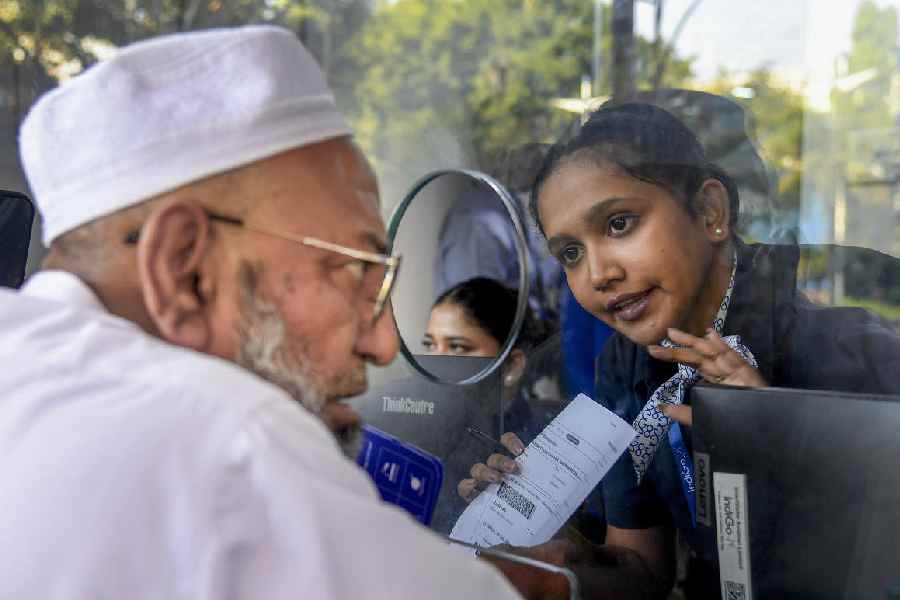The Centre and the RBI are yet to offer any clarity on utilising the proceeds from government borrowing after the target for this fiscal was raised 54 per cent, or Rs 4.4 lakh crore, to Rs 12 lakh crore.
Analysts are unsure whether the excess sum would be used to meet the shortfall in revenue or for providing stimulus to the economy.
A section of the analysts said the government estimates revenue will fall by Rs 4 lakh crore, and the higher proceeds from borrowing will be used to meet the gap. They are not expecting any relief package.
However, this view is not shared by the markets, which is betting on another round of stimulus. The benchmark Sensex on Monday surged over 650 points during intra-day trades on hopes of a stimulus but gave up all the gains on profit booking.
The North Block, which continues to dither over the stimulus package, has not provided any directions on the utilisation of the proceeds.
Estimates also vary on how India’s fiscal deficit will shape out. While some are of the view it would rise to around 5.5 per cent of GDP, there are others who feel the number will be higher.
According to Suyash Choudhary, head — fixed income, IDFC AMC, the revised borrowing programme which is 2 per cent of GDP is at the lower end of the expected requirements for additional financing by the government and is not sufficient to bridge both the revenue gap as well as the discretionary stimulus ahead.
``This is true even after accounting for the substantial fuel excise tax hike announced recently. That said, nothing stops a further addition to the gross borrowing down the line. Alternatively, or additionally, other sources of financing including a heavier dependence on short term borrowing via treasury bills may be in play’’ Choudhary added.
This view is also shared by Dushyant Padmanabhan of Nomura who feels the enhanced borrowing is an indication of the Centre’s acceptance that the fiscal deficit will slip by materially more than is allowed under the escape clause (0.5 per cent of GDP) and that the extra borrowing announced may be enough to take care of this ‘natural’ fiscal slip due to the growth underperformance.
However, he pointed out that it may not be enough to cover for the extra COVID-19 fiscal support and there is a possibility of more extra-borrowing announcements in the second half of this fiscal as the full extent of the fiscal slip becomes evident.
He added that it also signals that a second fiscal support package is around the corner.
``While this suggests a 2020-21 fiscal deficit of around 5.5-6 per cent of GDP, we expect the central government’s fiscal deficit to expand to 7 per cent of GDP in 2020-21, double its original target’’, Padmanabhan said in a note.
Even as the revised levels has raised fears of crowding out of the private sector, some action from the Reserve Bank of India (RBI) is also awaited. This could include more open market operations (OMOs) or another round of Operation Twist. Then there is also the possibility of the central bank monetising part of the fiscal deficit through private placement of bonds.
While there was no announcement from the RBI on Monday, as expected bond yields surged on the fresh borrowing programme. The benchmark 10 year bond yield rose around 27 basis points to 6.24 per cent and later was at 6.16 per cent a gain of around 19 basis points.
It is feared that yields could again rise if there are no measures coming from the central bank. Observers however, feel that the RBI will be wary of monetary transmission and that it could come up with specific steps.
Bond yields shoot up
Bond yields on Monday surged on the government’s decision to borrow more this fiscal.
The benchmark 10-year bond yield rose around 27 basis points to 6.24 per cent and later was ruling at 6.16 per cent, a gain of around 19 basis points. Markets fear the yield could continue to rise if there are no measures coming from the central bank.










